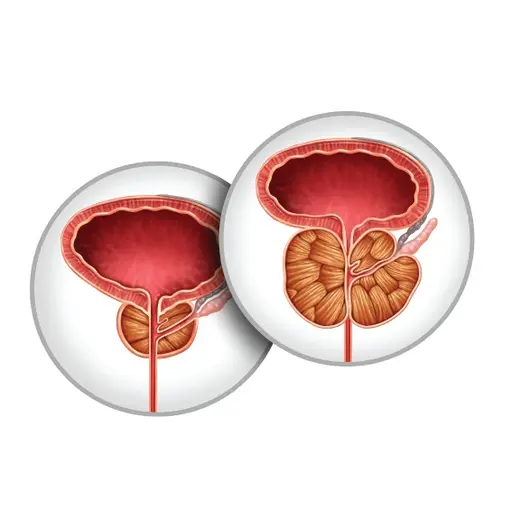
Select City
A hydrocele can become problematic or even burst if not treated on time. Get safe and minimally painful hydrocele treatment from the best doctors in India. We provide treatment for unilateral and bilateral hydrocele at an affordable cost.
A hydrocele can become problematic or even burst if not treated on time. ... Read More




Free Consultation

Free Cab Facility

No-Cost EMI

Support in Insurance Claim

1-day Hospitalization

USFDA-Approved Procedure
A hydrocele is a type of swelling in the scrotum or the pouch of skin that holds the testicles. This swelling generally occurs when the sac surrounding the testicles fills with fluid. Hydrocele often isn’t painful or harmful and can be left alone if it does not cause any symptoms. However, if your scrotum looks swollen, it is essential to consult your healthcare provider about it. Hydroceles are common among newborn babies and usually resolve on its own by age 1. But hydrocele can also occur in adults due to an injury within the scrotum or other health problems.
Contact us at Pristyn Care and book a consultation with highly experienced urologists near you. Undergo effective and minimally invasive hydrocele surgery with Pristyn Care.



Fill details to get actual cost
Before treatment, your urologist will likely perform a series of simple diagnostic tests. These tests are generally performed to determine the severity of your hydrocele and assess your overall health. To diagnose hydrocele, your doctor will perform a simple physical examination.
If you have hydrocele, your scrotum will look swollen. Your urologist will also ask some questions regarding your medical and surgical history and if you have any pre-existing medications. Your surgeon may also enquire about any injuries you may have suffered around the scrotum that could have caused your hydrocele. Alongside, to better understand your condition, your urologist may also perform some tests such as:
What is hydrocele surgery? A hydrocele surgery, medically termed hydrocelectomy (hydrocele surgery name), is generally considered a safe and effective treatment for hydrocele. It is a surgical procedure that involves making an incision in the scrotum or lower abdomen to drain any accumulated fluid. There are primarily two methods of performing a hydrocelectomy:
Once the instruments are in place and your surgeon has a clear view of the hydrocele sac, they will carefully drain the hydrocele sac of any fluids. Your urologist may excise and remove the sac to prevent the fluid from accumulating again. The entire procedure is performed under general anesthesia, meaning you will be asleep throughout the procedure.
The procedure for open hydrocelectomy is very similar to laparoscopic hydrocele operation. The key difference between the two procedures is the size of the incision being made. The incision size for a laparoscopic hydrocelectomy is smaller as compared to the incision made for open hydrocelectomy.
While hydrocelectomy is generally considered to be an effective treatment for hydrocele, your urologist may use some non-surgical methods before considering surgery. Some non-surgical treatments for hydrocele are given below:
To help relieve and manage some of the symptoms you may be experiencing due to hydrocele, your urologist may recommend some home remedies such as:
On average, complete recovery after a hydrocele surgery can take anywhere from 2-3 weeks after surgery. However, most patients can return to their daily life within just 2 days after the hydrocele surgery procedure . The exact hydrocele surgery recovery time will likely vary depending on your overall health and the quality of postoperative care. During your recovery period, it is essential to follow some simple tips and guidelines to promote recovery and minimize the chances of any postoperative hydrocele surgery complications. Some guidelines and precautions after hydrocele surgery that your surgeon may recommend include:
Diet & Lifestyle Consultation
Post-Surgery Free Follow-Up
Free Cab Facility

24*7 Patient Support
Alongside its ability to effectively treat hydrocele in men, laparoscopic hydrocelectomy offers several benefits compared to traditional methods. Some benefits of laparoscopic hydrocelectomy are given below:
Before your hydrocele treatment, following the preoperative preparations and guidelines recommended by your urologist is important. The exact preparations and guidelines will likely vary depending on your overall health and other factors. Some common preparations that are usually recommended before a hydrocele surgery procedure include:
While hydrocele surgery complications of any kind are rare, they can still happen and should not be taken lightly. Some potential complications that may occur after your hydrocelectomy surgery are given below:
If you are facing any persistent side effects that worsen over time or notice any odd symptoms during hydrocele surgery recovery , it is advised to inform your healthcare provider about them. These could be signs of potential complications and require prompt medical attention.
On average, hydrocele surgery cost in India can range anywhere from Rs. 30,000 to Rs. 80,000. The exact surgery cost, however, is likely to vary depending on various factors. Some common factors that may affect hydrocele operation costs in India are:
Yes, a hydrocelectomy is generally covered by most health insurance plans in India as it is generally deemed a medical necessity. Hydrocele can significantly affect a patient’s daily life and, if left untreated, may also lead to serious complications. Additionally, hydrocele treatment is considered a standard medical hydrocele surgery procedure and is recognized by medical professionals as a necessary intervention to treat the condition. Therefore, health insurance companies are required to cover hydrocelectomy costs under Affordable Care Act (ACA).
Prior to surgery, it is advised to have a detailed discussion about your insurance plan and its inclusions and exclusions with your insurance provider. If you still have any queries, you can also get in touch with our insurance team at Pristyn Care for further assistance.
Hydroceles are generally harmless and don’t pose any serious risks. However, if your hydrocele is symptomatic, it is important to consult with your healthcare provider as soon as possible. If left untreated for a prolonged period, some complications that may arise are given below:
Hydrocelectomy is generally considered to be an effective treatment for hydrocele in adults. A hydrocelectomy is a surgical procedure to remove or repair a hydrocele, a fluid-filled sac surrounding your testicles.
There are primarily two types of hydroceles:
No, hydroceles do not occur in women. A hydrocele is a condition characterized by fluid accumulation within the sac surrounding the testicle in the male scrotum. This sac called the tunica vaginalis, is absent in the female anatomy. As a result, hydroceles are exclusive to males and are not found in women.
When a hydrocele bursts, it means that the fluid-filled sac surrounding the testicle ruptures, resulting in the release of the accumulated fluid into the surrounding tissues. The bursting of a hydrocele can cause a sudden change in symptoms and may lead to certain side effects or complications, such as:
To book your appointment with a qualified urologist near you, simply call us at Pristyn Care or fill out our appointment form, after which our care coordinators will contact you. You can also download the Pristyn Care app and get in touch with highly qualified and experienced urologists near you.
A hydrocelectomy is generally considered to be a minor surgery. Most patients return home on the same day and can continue their daily routine just 2-3 days after surgery.
No, a hydrocelectomy, whether open or laparoscopic, is not expected to cause infertility. In a hydrocelectomy, the surgeon focuses on removing the fluid-filled sac around the testicles or repairing it to prevent recurrence. The testicles and their surrounding tissue, which are responsible for sperm production, are typically unaffected during surgery.
An inguinal hernia is when a part of the intestines drops into the scrotum. This results in swelling of the scrotum or with a protrusion either in the scrotum or in the groin area. On the other hand, a hydrocele is a fluid-filled sac that develops around the testicles within the scrotum. In the case of hydrocele, there may not be any protrusion. In some cases, inguinal hernia and hydrocele can co-occur.
No, a hydrocele is not cancerous in nature. While hydroceles can be uncomfortable or embarrassing, the majority of them are harmless. Even then, if you are experiencing any abnormal swelling or discomfort around your scrotum, it is advised to get it checked by a qualified healthcare professional.
In some cases, hydroceles can go away on their own, particularly in newborns. In newborns, hydroceles often resolve within the first year of life without any intervention. However, hydroceles are less likely to resolve spontaneously in teenagers and adults. If a hydrocele persists or causes discomfort, medical evaluation and potential surgical options should be considered.
The hydrocele operation, known as hydrocelectomy, is a surgical procedure to treat hydrocele. A hydrocele is a fluid-filled sac that forms around the testicle, causing swelling in the scrotum.
During a hydrocele operation, the surgeon makes an incision in the scrotum or lower abdomen to drain out the fluid after removing the parts of the hydrocele sac.
The processus vaginalis is a structure during fetal development that plays a role in the descent of the testicles into the scrotum. In male infants, the testicles initially develop within the abdominal cavity and gradually move downward into the scrotum before birth. The processus vaginalis is a pouch-like extension of the peritoneum, the lining of the abdominal cavity.
The most basic method to check hydrocele at home is to throw some light on the scrotum. If the scrotum is full of fluid, it will light up. But, it is always advised to consult a doctor and undergo appropriate diagnostic tests.
There are various reasons due to which the testicles get swollen, such as when the scrotum gets filled with extra fluid, making it appear swollen, or the enlargement of the veins in the scrotum may also be a cause for the swelling.